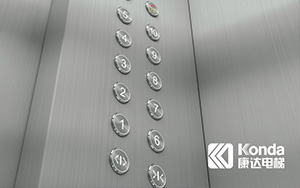When elevators will be retired will be regulated
Under what circumstances should elevator components be "retired"? The state has not made a clear regulation on this. Since yesterday, the draft of the Beijing local standard "Technical Requirements for Scrapping Main Components of Elevators" has been made public for comments on the website of the Beijing Municipal Bureau of Quality and Technical Supervision. The formulation of this standard will not only change the current situation where there is no basis for the scrapping of elevator components, but also greatly promote the renewal and transformation process of old elevators in this city.
It is understood that the aging of elevator product components after years of use has become the main factor leading to elevator safety accidents. However, in some residential communities, there is still the phenomenon of old elevators operating beyond their service life. The operation of some "high-age" components has hidden safety hazards, but some communities are reluctant to replace them in order to save money.
This draft for public comment sets out the basic technical requirements and basis for the scrapping of eight major safety components of elevators, namely the traction drive, suspension device, car, counterweight, door system, safety protection, electrical control and guide rails. It serves as the criterion for the scrapping of elevator components with significant safety risks. Take the car as an example. When any of the following conditions occur and cannot be repaired: severe deformation or damage to the car walls and roof, severe deformation, cracking, rusting or perforation of the car bottom, or cracks in the glass car walls. It should be scrapped. The "door system" includes floor doors, car doors, door machines, floor sines, etc. The standard stipulates that the opening and closing time of the central automatic door should not exceed 3.2 seconds. Additionally, the deformation and damage of the floor sines may cause risks such as floor and car doors coming out of the groove, and are prone to dangers such as falling, impact, and squeezing. Therefore, when these problems are substandard and cannot be repaired, the elevator components will also be declared invalid.
Industry insiders say that after the release of this standard, property management units will take this opportunity to strengthen supervision over elevators, as well as prompt maintenance, repair and scrapping. Property management units and owners can also decide whether to scrap elevators based on this standard.








 赣公网安备 36012202000318号
赣公网安备 36012202000318号